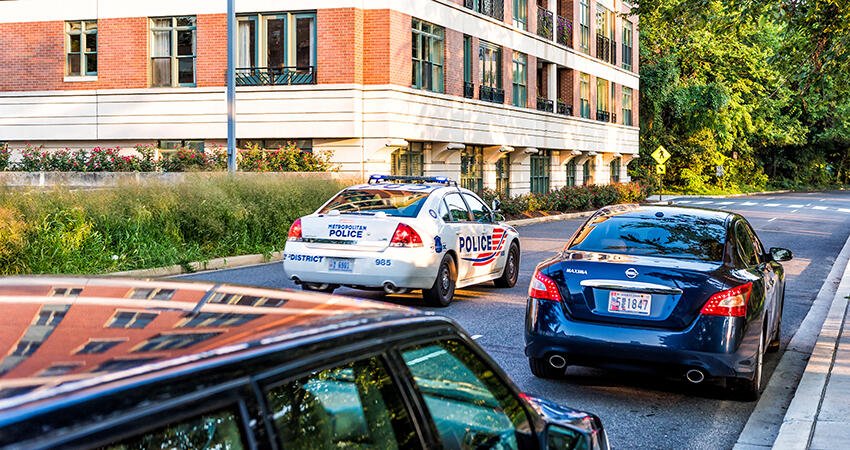
As Neighborhoods Gentrify, Police Presence Increases
- Title:
-
Policing Gentrification: Stops and Low-Level Arrests during Demographic Change and Real Estate Reinvestment
- Author:
-
Brenden Beck
- Source:
- Publication Date:
-
2020
Misdemeanor-focused policing, including stops and low-level arrests, is a well-documented, traumatic practice that negatively affects employment, family ties, health, school performance, and immigration status. Police target Black and Latinx people at rates disproportionate to their share of the population, and research on the efficacy of low-level policing and stop-and-frisk practices finds these acts of control do not reduce crime and that resulting minor crime reductions are outweighed by the negative costs of police violence and community trauma.
Research links key characteristics of gentrification, including the influx of white, middle-class residents and real estate development, to increases in low-level policing in qualitative research. This quantitative study complements existing qualitative research by analyzing a longitudinal dataset of 2,038 New York City census tracts’ demographics, street stops, low-level arrests, crimes, 311 calls, and property values between 2009 and 2015 to investigate the role of gentrification in the expansion of policing.
This study used neighborhood-level data to capture policing’s relationship with three key components of gentrification: class, race, and property value. For this study, gentrifying activity was an increase in the non-Hispanic[1] white population, the middle-class population of a neighborhood, and/or the increase in real estate value. To capture the complexity of class status, the author constructed an index of class demographics that included four measures: a census tract’s median household income, the proportion of the tract with a bachelor’s degree or higher, the percentage employed as professionals or managers, and the percentage of families not in poverty. To operationalize low-level policing, three measures were isolated: street stops, order-maintenance arrests, and proactive arrests.
The author divided the analysis into the policing impacts of supply-side (real estate market, property value) and demand-side (neighborhood composition changes in race and class) gentrification. The author also isolated census tracts into two subsamples: tracts eligible for gentrification and tracts already gentrified or too wealthy to be gentrified.
The analysis compared four variables (311 calls to police, street stops, order-maintenance arrests, and proactive arrests) across the two census tract types, and a multivariate analysis incorporated percentage of white non-Hispanic people and the class index. Importantly, as young men of color are most targeted by police, the author controlled for the share of a neighborhood that was 18 to 34 years old and male.
A novel component of this analysis is the measurement of real estate market growth using tax assessment property values. The author analyzed how landlords, developers, and city officials encourage policing in predominately low-income neighborhoods primed for gentrification. Although his methods cannot reveal the mechanism linking investment and policing, he cited other research showing city officials often hope the removal of people experiencing homelessness and the displacement of low-income Black and brown tenants will encourage new, wealthy residents to move to and invest in the area. As such, policing is shown to be not only a tool of social control but also a component of racist “urban renewal” practices that target economic development designed to benefit wealthy, white populations and real estate elites. This practice is termed “development-directed policing.”
Key findings
- For every 5 percent increase in property values, neighborhoods experienced a 0.2 to 0.3 percent increase in discretionary arrests. Wealthy neighborhoods and those not eligible for gentrification did not experience this trend, further supporting the assertion that development-directed policing was practiced.
- As the middle-class population of a neighborhood increased, so did the frequency of 311 calls to police. However, the increase in 311 calls was not significantly related to more arrests or stops.
- An increase in a neighborhood’s white population was not related to increased 311 calls to police and was actually associated with fewer street stops and proactive arrests. The author notes that this aggregated decrease is likely driven by fewer stops and arrests of white people and a stability in stops and arrests of Black and Latinx people. However, an increase in white populations was associated with more order-maintenance arrests.
- This kind of development-directed policing was found throughout New York City and was not isolated to neighborhoods undergoing high-profile change or redevelopment initiatives.
Research implications
- The divergence in how gentrification’s three key components (race, class, property value) relate to policing suggests that studies of gentrification’s effects need to be disaggregated on the component level.
- Researchers should intentionally incorporate neighborhoods with varied gentrification timelines. Gentrified neighborhoods change on different scales, and some areas marked for redevelopment may experience long-term demographic change before reinvestment.
Policy implications
- Gentrification-related policy needs to take into account the unique ways class, race, and real estate markets individually affect policing.
- Conversely, spatial analyses of policing should seriously consider the impacts of gentrification and real estate development.
- Low-level policing and gentrification both produce serious mental and physical health consequences for individuals, families, and communities. Though some dismiss these phenomena as secondary, the ripple effects of this physical and social violence should be a priority in analysis and policy response.
- Mayors and city councils might consider eliminating the involvement of police in redevelopment efforts.
[1] When referring to US Census Bureau population data, the Housing Matters editorial team opted to use the terminology “non-Hispanic white” to maintain consistency with the data source and original article.


